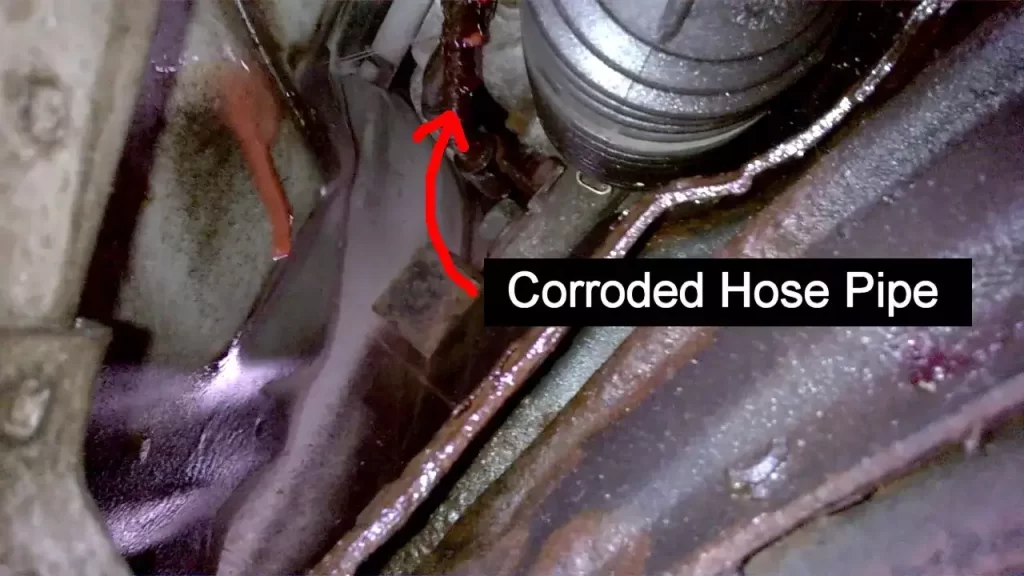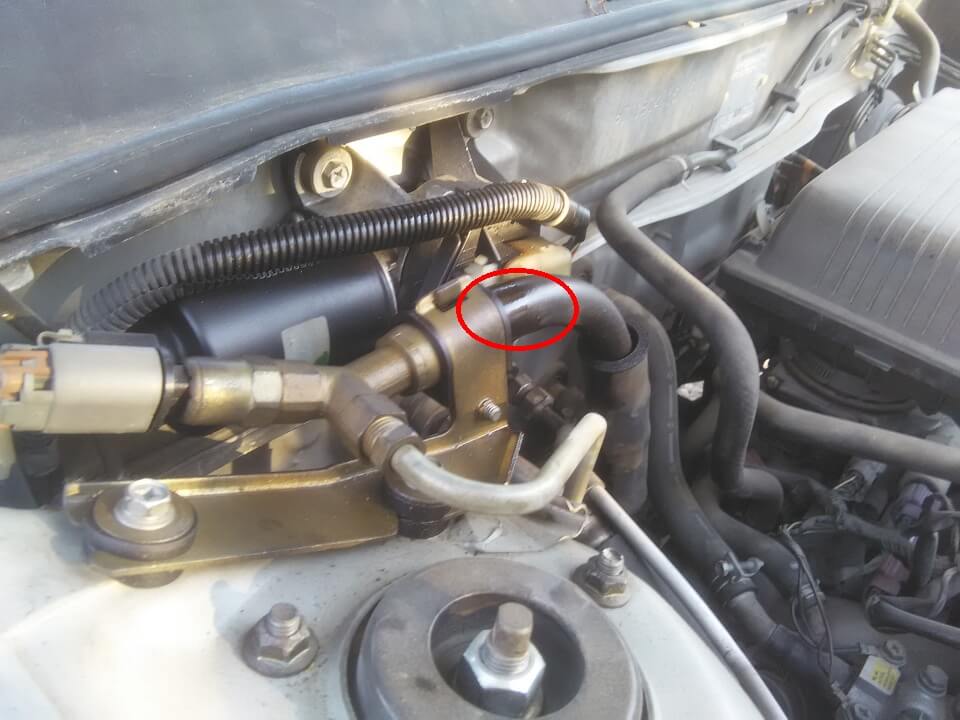Maintaining every part of the vehicle is very important to avoid malfunction. One such malfunction is Power steering leaks when the car is off. As the vehicle’s power steering system might fail, owners of vehicles may find themselves in trouble and not knowing what to do. This can be a danger, since it may make turning your car around in the direction you wish more difficult or not possible.
You may notice a small amount of dried fluid around the joints of some of the hoses, or the fluid in the power steering reservoir may drop continuously below the minimum recommended level if the power steering fluid is leaking when the engine is off.
The problem which causes the power steering to leak when your car is idle, how to diagnose it and what you can do will be explained in this article.
What Causes Power Steering Leaks When the Car is off?
When the engine is off, the steering fluid leaks because it rests in the system and is no longer under pressure. This can cause a negative pressure at the point of failure that sucks in air from the outside, pushing fluid out through a weak point in the system. Here are the top 3 most common reasons for a power steering fluid leak when the car is off.
1) Leaking power steering pump
The power steering pump is a very important component of the steering wheel. It helps to transfer fluid into the rack and pinion suspension system. The rack and pinion suspension is helpful for the movement of the car wheels.
In addition, it helps to control the pressure for the steering wheel to move easily, even when there is little force. Low fluid levels may create a gurgling sound if you turn the steering wheel slightly. Leaking is the first sign of a worn steering rack and pump, eventually leading to failure.
How to Fix
It must be replaced with a new one if you are to fix the leakages caused by the steering wheel pump. The easiest way would be to arrange an appointment at the garage.
2) Leaking Power Steering Hoses
If you want to check for any power steering leaks, you must first check the steering house. There are two Houses:- the pressure and return hose. The pressure hose links the steering box to the steering pump, and the return hose links the gearbox to the reservoir. Due to a worn or loose seal, the hose may crack. And this can lead to disconnecting the steering component with the hose, which allows fluids to leak out.

However, the hydraulic power steering system is usually very durable. Depending on vehicle usage and weather conditions, the life of a hydraulic pump, rack or seal can be as much as 100 000 miles.
How to Fix
This leakage can be fixed by closing a gap in the seal or applying Teflon tape around the thread, but you must ensure it does not enter the system. If there’s a leak in the hose, it’d be best if everything had to be replaced.
3) Leaking Power Steering Fluid Reservoir
The power steering fluid reservoir is another commonplace for a power steering leak. The reservoir has two rubber hoses attached, a feed hose and a return hose. Also, it has a removable cap with an integrated dipstick that helps check the fluid level.
Leaks may happen from hose joints or from the cap seal. It’s easy to detect a leakage in the power steering reservoir since it will have dried, flexible fluid around its source.
How to Fix
When you’ve noticed that the reservoir is filled, use a turkey baster or syringe to remove any extra fluid.
Power Steering Leaks Symptoms.
When there is a problem with the electric steering, it’s usually obvious. If you notice fluid leaking between the engine and the pavement, it may be from your power steering system. One or more symptoms, like the following, are most commonly associated with a power steering fluid leak:
1. Heavy Steering At Low Speeds
If turning the steering is usually more difficult than previous, then it can leak into the system. It is difficult to find it while driving the car because of less tire surface touching the road.
2. Ignition Noise
Another sign you should be watching or listening to is the squealing noise from a steering pump when turning on the ignition. In addition, the noise could be accompanied by an alert light.
3. Steering Fluid Leaking Onto The Engine Or Pavement
Like other leaks in an engine, if you find any fluid on the ground or in the engine bay, it may leak. Most hydraulic steering systems use red fluid to get noticed quickly. A steering fluid leakage can often be very small and takes a long time to build up.

You will not notice any new leakage. Instead, you may be experiencing a buildup of dried fluid around the leak or where it is collected. If fitted, fluid from leaks usually collects at the system’s lowest point, such as at the bottom of the hoses, suspension arms or bushings or on the lower engine cover.
What Color is the Liquid from the Power Steering Leak Fluid?
The power steering fluid is like transmission fluid, varying in the color spectrum between light red and brown. But the viscosity is very weak, and leakages will be at the back of your car.
How Much Does It Cost To Fix A Power Steering Leak?
The repair of your power steering malfunction, including the labor cost, costs between £77 and £170 on average. Solve your problem; however, it may take much more than that. The location of your home and the garage you select to repair a leaking power steering are some factors that impact the price.
Conclusion
You’re not supposed to compromise the safety of your vehicle. This is why you must keep your car on top of maintenance and regularly check it. To achieve the best results, we suggest you comply with our inspection checklist. First, you ought to take this as soon as possible if there’s a problem. It will cost you an expensive repair or a complete breakdown in the long run, and something even worse if you ignore your power steering problem!
It is recommended that you schedule an inspection at your nearest mechanic’s service station as soon as possible if you suspect any of the symptoms described in this article. The more you leave the engine steering fluid leaking, the bigger it’s going to get
FAQ Regarding Power Steering Leaks when the Car is Off
Q.1) How do I know if my car has a power steering leak when it’s off?
The signs of a power steering leak can include difficulty turning the steering wheel or squealing noise when you turn the wheel, drops of power steering fluid on the ground underneath, and low levels of power steering fluid in the reservoir.
Q.2) How can I control power steering leaks when my car is off?
You need to keep your power steering fluid levels topped off and inspect the system regularly for signs of wear or damage. Other prevention tips include storing your car in a cool, dry place to minimize the risk of heat damage to the power steering pump and hoses.
Q.3) Can I fix a power steering leak myself, or should I take my car to a mechanic?
An experienced person will be able to analyze the problem accurately and make the essential repairs to prevent further damage to your car’s steering system.




